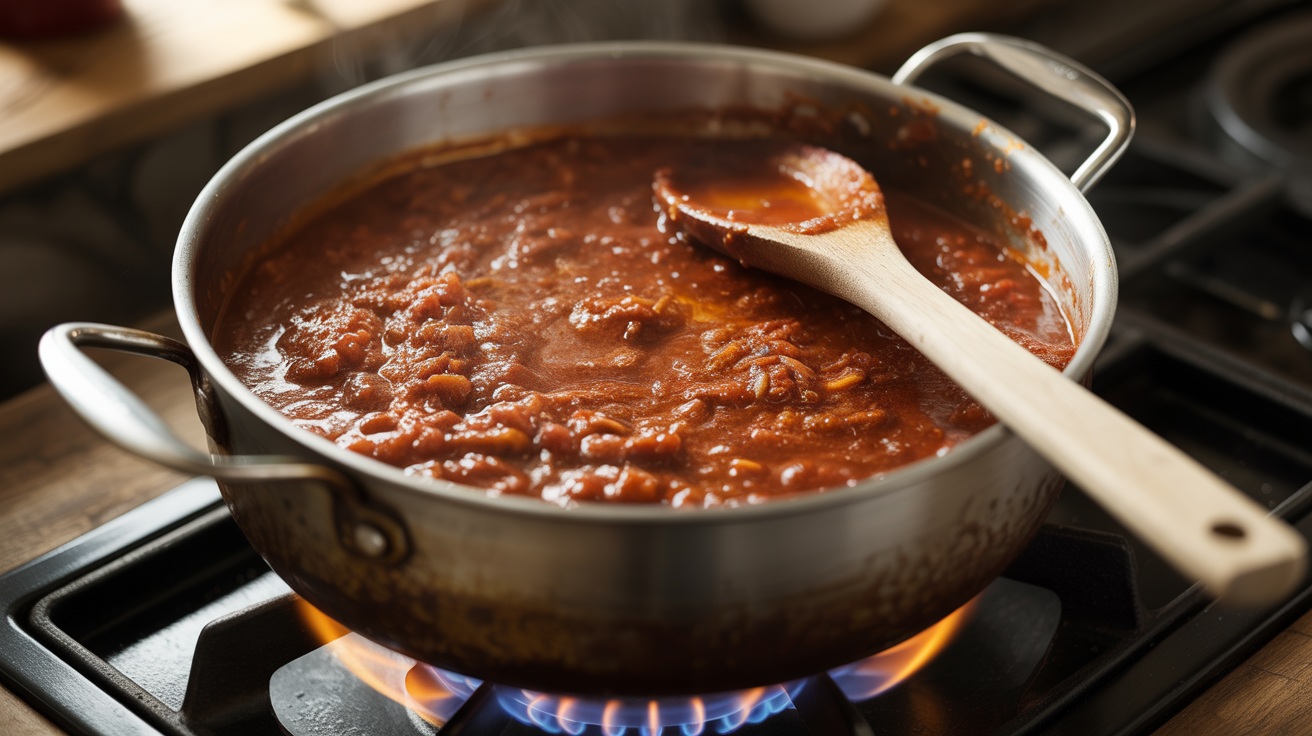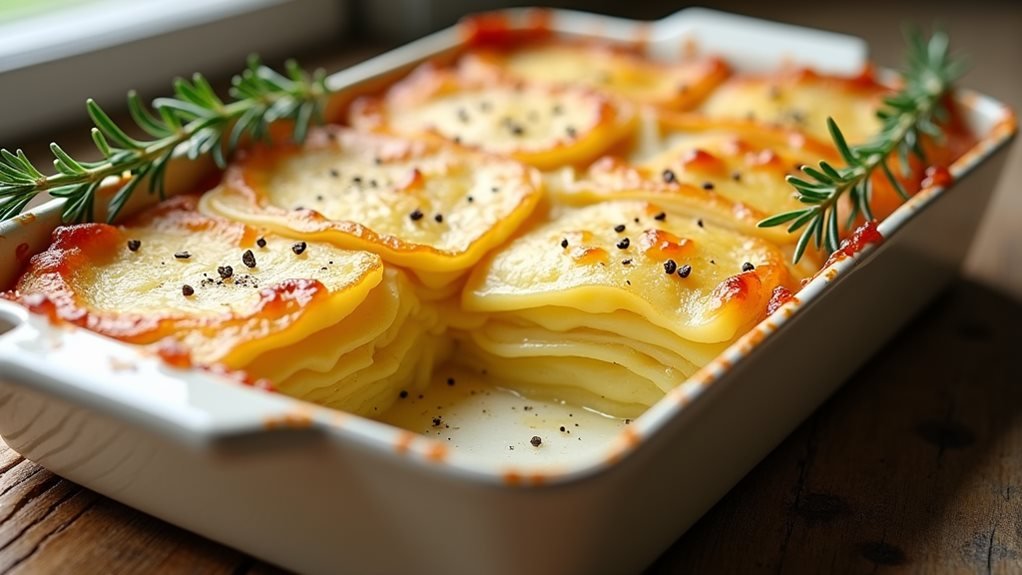What separates chef-style ragù from basic meat sauce: a three-meat blend, soffritto cooked patiently, wine reduction, and milk for balance — all brought together with low, steady heat. If you’re familiar with Gordon Ramsay’s classic Lasagna, this guide explains why the sauce stands on its own and how it works.
How Gordon Ramsay Elevates Traditional Bolognese
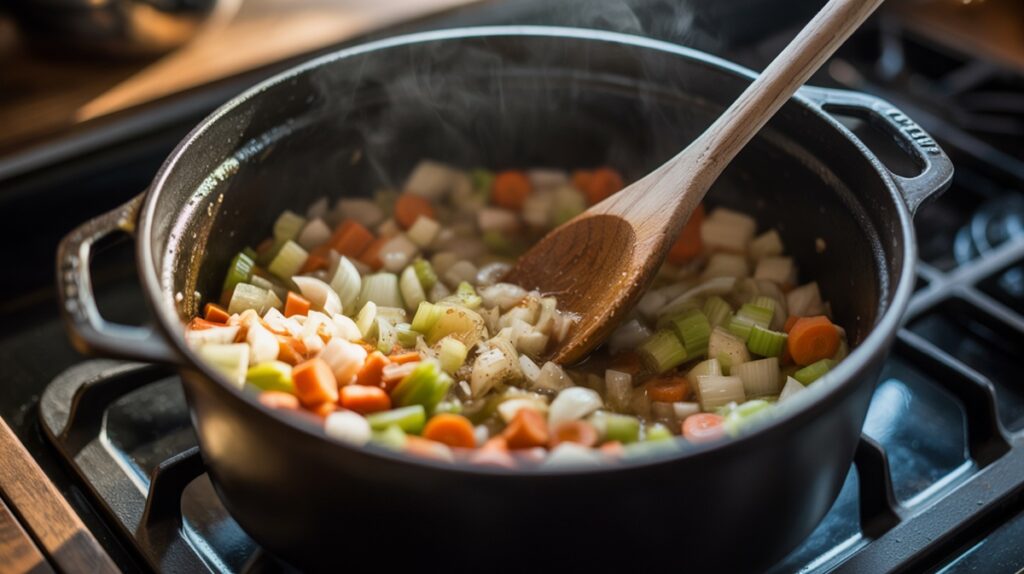
At its core, ragù alla Bolognese is built on patience and heat control. Ramsay stays close to tradition while refining technique:
- Three meats: beef for body, pork for richness, veal for tenderness.
- Soffritto: onion, celery, and carrot are slowly cooked until sweet and golden.
- Tomatoes: San Marzano for balanced acidity and clean flavor.
- Wine reduction: deglaze and reduce before simmering for a long time.
- Milk enrichment: softens acidity and yields a velvety texture.
Italy’s Accademia Italiana della Cucina documents the classic approach; Ramsay’s method tracks closely, with a few chefly adjustments that fit a home kitchen.
Step-by-Step Breakdown of Ramsay’s Technique
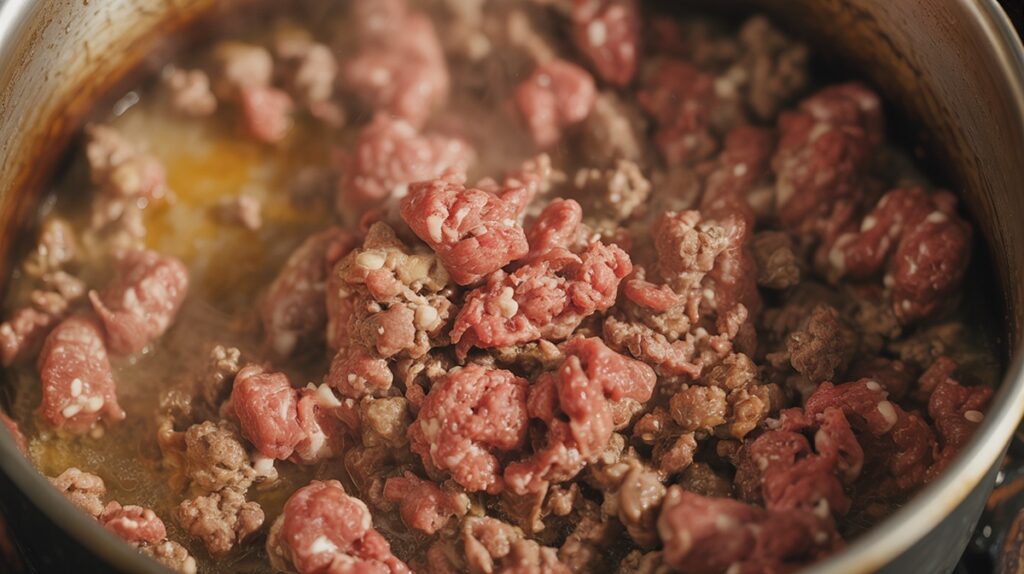
- Brown the meat thoroughly. Browning drives flavor. Avoid overcrowding the pot.
- Deglaze with wine and reduce. Scrape up the fond; reduce until the alcohol cooks off.
- Add soffritto, tomatoes, herbs, and milk. These layers of sweetness, acidity, aromatics, and creaminess.
- Keep a gentle simmer for 2–3 hours. Stir occasionally to prevent scorching.
- Season and finish. Aim for a cohesive, spoon-coating texture; finish with Parmigiano-Reggiano.
For a side-by-side look at flavor building with ground meat, see Gordon Ramsay’s Meatballs. Watching his Facebook cooking demo can help you visualize the reduction and texture checkpoints.
Bolognese vs. Spaghetti Sauce — Key Differences
These sauces get mixed up often. They’re not the same:
- Bolognese: slow-cooked, meat-led ragù with soffritto, wine, and milk; traditionally paired with wide pasta like tagliatelle.
- Spaghetti sauce: tomato-forward and lighter; may be meatless or quick-simmered.
Home cooks often note — even in community threads like this Reddit discussion — that patience can significantly impact the result. Time lets flavors settle into a unified sauce.
Why Milk Belongs in Bolognese
Milk tempers the acidity from tomatoes and wine, and it gently tenderizes the meat. This is a familiar step in many Italian kitchens and a hallmark of the style. Ramsay uses it for the same reason: to achieve a smoother texture and rounder flavor.
Best Pasta Pairings for Ramsay’s Ragù
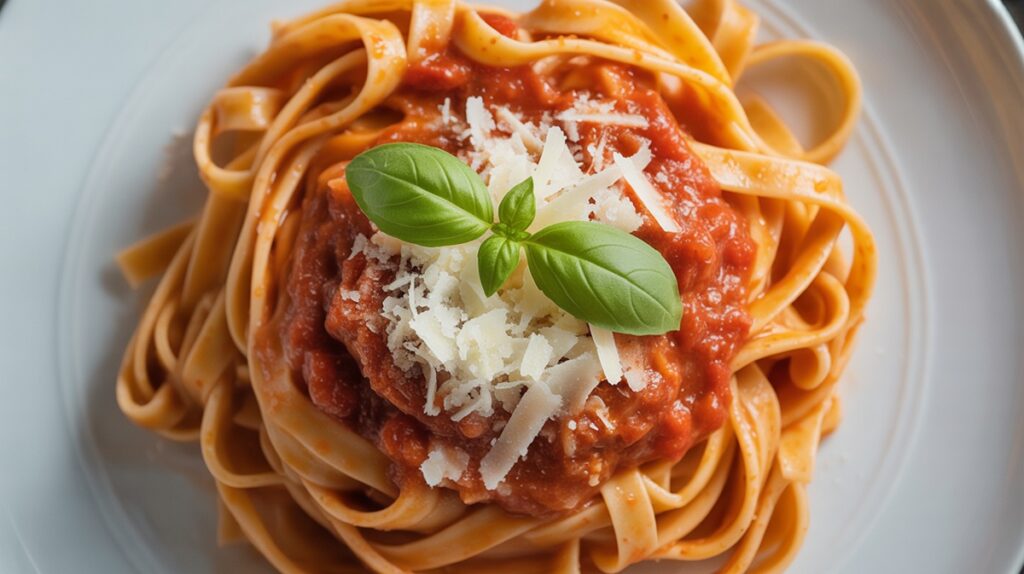
Choose broad, flat noodles — tagliatelle or pappardelle — so the sauce clings instead of sliding off. Fresh pasta’s slightly rough surface helps. Spaghetti works in a pinch, but it isn’t the classic pairing.
Craving a different kind of creamy pasta? Try Gordon Ramsay Alfredo Sauce for a change of pace.
Tips, Storage, and Make-Ahead Advice
- Heat control: keep the simmer low to prevent scorching.
- Next-day win: flavor deepens after a night in the fridge.
- Freezing: Portion into airtight containers for up to 3 months.
- Leftovers: perfect for lasagna, stuffed shells, or baked pasta.
For gear that holds a steady simmer, see our kitchen equipment page; a heavy Dutch oven makes a difference. For pairing ideas, browse food & drink suggestions.
How We Tested
Multiple home-kitchen trials with both fresh and dried pasta confirmed a few constants: steady low heat, careful browning, and quality tomatoes matter most. Each batch reached a spoon-coating consistency around the 2 1/2-hour mark, and the day-two servings tasted more integrated.
FAQs
Can I make Ramsay’s Bolognese without veal?
Yes. Replace veal with additional beef or pork. The sauce will remain hearty and well-balanced.
Is this identical to traditional ragù from Bologna?
It’s close, with small chef-driven updates, such as garlic and a three-meat mix. The foundation — soffritto, wine, milk, long simmer — is in line with classic practice.
Can I cook it in under an hour?
You’ll get a sauce, but not the same depth of flavor. The simmer time builds body and complexity.
Can I make a lighter or plant-based version?
Yes. Lean ground turkey or chicken can be used as a substitute for beef or pork. For plant-based cooking, soy crumbles or lentils work well when you keep the same soffritto, tomato, and wine method.
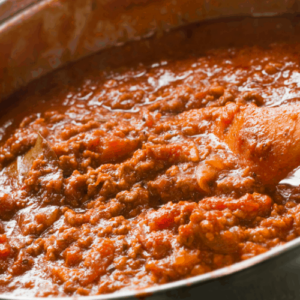
Gordon Ramsay Bolognese Recipe
Ingredients
- 1 pound ground beef 80/20
- 1/2 pound ground pork
- 1/2 pound ground veal
- 2 carrots finely diced
- 2 celery stalks finely diced
- 1 large onion finely diced
- 4 garlic cloves minced
- 2 cans San Marzano tomatoes
- 1 cup red wine
- 2 bay leaves
- 2 sprigs fresh thyme
- 2 tablespoons olive oil
- 6 oz. whole milk
- Salt and black pepper
- Fresh basil leaves
- Parmigiano-Reggiano for serving
Instructions
- Prepare the Vegetables: Finely chop the onion and carrot. Mince the garlic cloves.
- Cook the Beef: Heat a dash of olive oil in a large skillet or saucepan over medium heat.
- Add the ground beef, breaking it up with a spoon, and cook until browned. Season with salt and pepper.
- Sauté the Vegetables: Push the beef to one side of the pan. Add the chopped onion and carrot to the other side and sauté until they soften.
- Add the minced garlic and cook for another minute until fragrant.
- Deglaze with Wine: Pour in the red Merlot wine and let it simmer, scraping up any browned bits from the bottom of the pan.
- Add Tomatoes and Seasonings: Stir in the chopped tomatoes, tomato purée, dried oregano, and Worcestershire sauce.
- Bring the mixture to a simmer.
- Simmer the Sauce: Reduce the heat and let the sauce simmer gently for about 20-30 minutes, allowing the flavors to meld together.
- Finish with Milk: Pour in the whole milk and stir through. Continue to simmer for another 10 minutes.
- Adjust Seasoning: Taste and adjust the seasoning with additional salt and pepper as needed.
- Serve the Bolognese sauce over cooked pasta, such as spaghetti or tagliatelle.
- Garnish with grated Parmesan cheese and fresh basil if desired.
